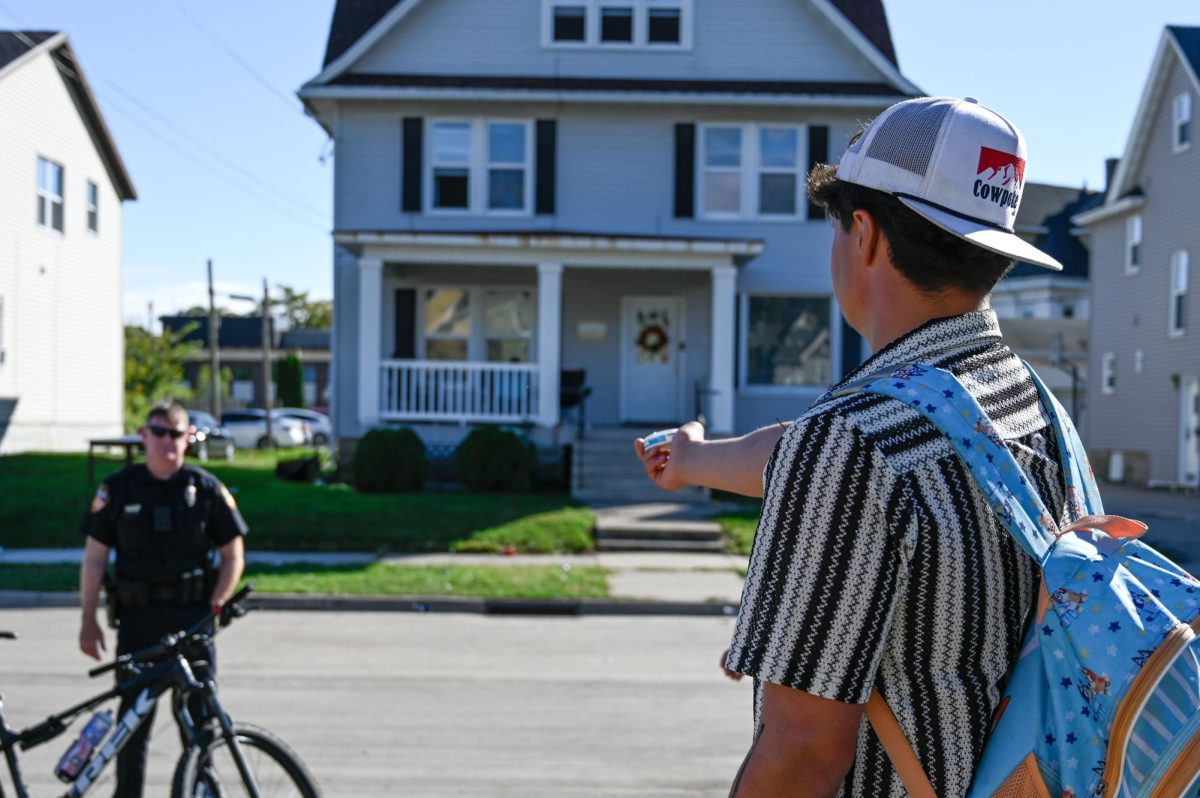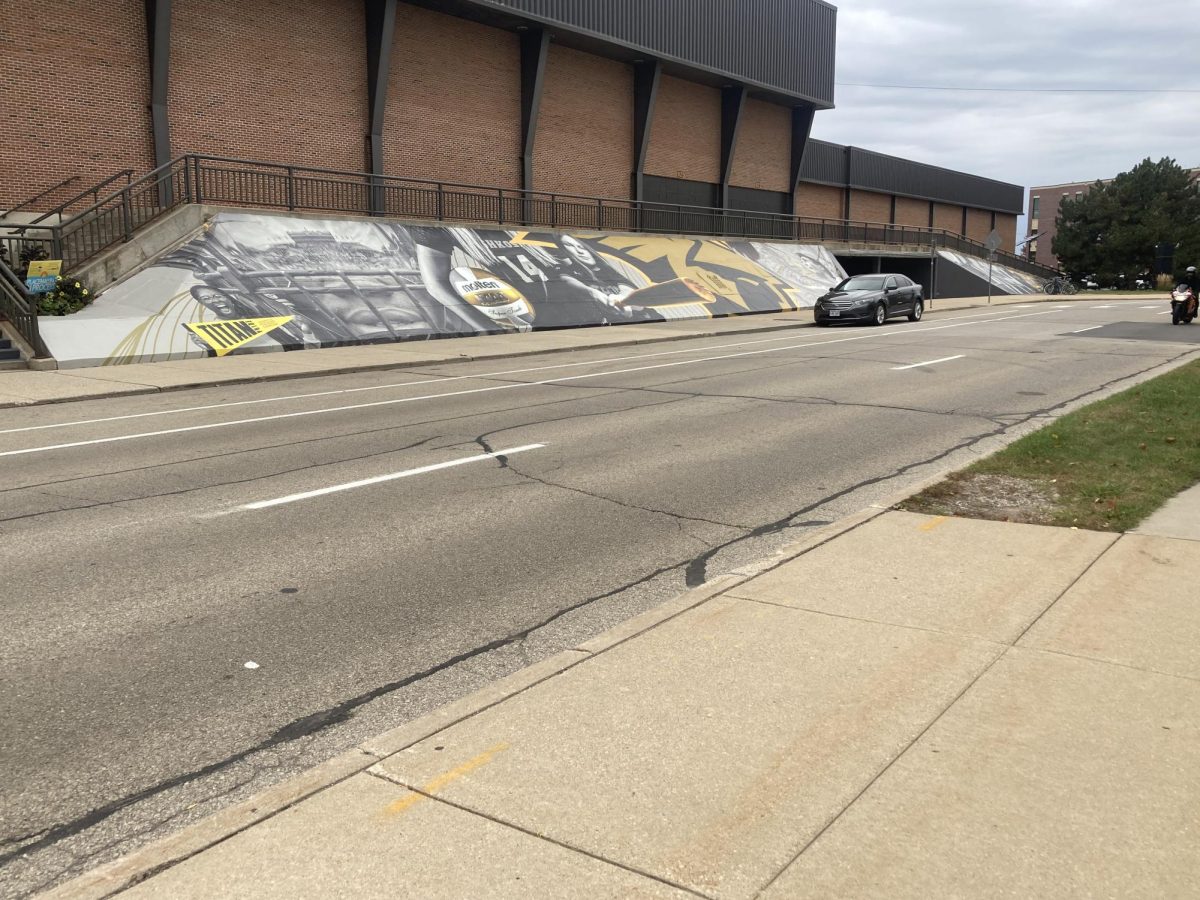While the presence of weapons on UW Oshkosh grounds seems dangerous to some, Students for Concealed Carry finds it necessary to ensure safety.
UW Oshkosh student and president of the organization Jordan Hansen said he believes allowing those with a permit to carry concealed weapons would increase safety on campus.
“Allowing people to carry increases safety because you have an untold number of first responders to an incident, such as a shooting, who are able to respond much faster than the police,” Hansen said.
Hansen also said allowing people to carry acts as a deterrent to potential shooters and to common criminals.
“We know because of his notes that James Holmes, the Aurora, Colorado theater shooter, picked his venue because it was a gun-free zone,” Hansen said.
Hansen said he believes the criminal from last semester’s attacks, picked the campus because he knew that students were unarmed.
“Had we allowed students to lawfully carry weapons on campus, that criminal likely would have moved to a different area out of fear of being harmed by a victim,” Hansen said.
Hansen said by not allowing concealed carry on campus, innocent students are at risk of being unable to protect themselves.
“A persons right to self-defense, one they have in grocery stores, gas stations, malls, banks and office buildings across Oshkosh should not end when that person walks to class,” Hansen said.
Oshkosh Student Association Senator and Chairman of College Democrats Grayson Bourke said he is pro-second amendment.
“I believe that the vast majority of gun owners are individuals who use guns legally, safely and responsibly,” Bourke said. “The old adage that ‘guns don’t kill people, people kill people’ is true.”
Bourke said he thinks guns are safe when in the hands of trained or certified people.
“We have nothing in place to truly prevent someone from carrying a weapon in their book bag into academic buildings anyway, so we might as well make sure if it is done, it is done legally and responsibly,” Bourke said.
However, Bourke said he doesn’t think that more guns will mean more safety.
“I think that if people are concerned about safety, then academic buildings should have special access or more police should be hired on campus,” Bourke said.
According to the Wisconsin Administration Code, it is currently prohibited for any person to possess, carry or use any dangerous weapon on university lands.
The law states armed individuals are not permitted to go into public buildings, including a university.
According to FBI statistics, 160 shooter incidents have occurred in the U.S. between 2000 and 2013 with 7.2 percent of these occuring at an institution of higher education.
There’s been an upward trend in the last seven years of this period, with an average of 16.4 incidents a year as opposed to an average of 6.4 incidents a year occurring in the first seven years.
The FBI reported that 60 percent of those incidents ended before police arrived.
Though the number of incidents is low for higher education, the study shows that incidents in educational facilities account for some of the higher casualty counts.
University Police Lt. Chris Tarmann said a lot of emphasis is being put on training campus departments to make sure there is a campus-wide understanding of what to do in an active shooter situation.
“A lot of the training that we put on is to first get out of the area,” Tarmann said. “If you can’t get out of the area, you need to try to block the area and find a different way out.”
Tarmann said if that doesn’t work, then one must figure out if he or she can take action and create dysfunction so to be removed from the situation.
Tarmann said UP Chief Joseph LeMire, himself and several other officers have been training departments on campus several times a month for the past three to four years.
“Notification would be important in the moment, but really, it’s going to be a fallback on the training that we’re already providing to the departments on campus,” Tarmann said.
Tarmann said it is too difficult to say exactly what would need to be done during an active shooter incident because each situation is different.
“We can’t tell you this is exactly how you need to respond because everyone’s learning,” Tarmann said. “We’re learning as law enforcement about how things have happened and how to respond, but the bad guys are also learning how we respond to those situations.”
Tarmann said a lot of what they know is that these incidents happen very quickly and are usually over within 10 to 15 minutes.
“Often times the incident is over before law enforcement even gets on scene, so it’s just about having people who are prepared in the moment-staff, faculty and students to understand how to respond and really give us a cushion so we can get there and take action to stop the threats,” Tarmann said.
Tarmann said it is believed the UP is prepared for an incident like this, and feels confident officers would be able to respond appropriately in the moment.








